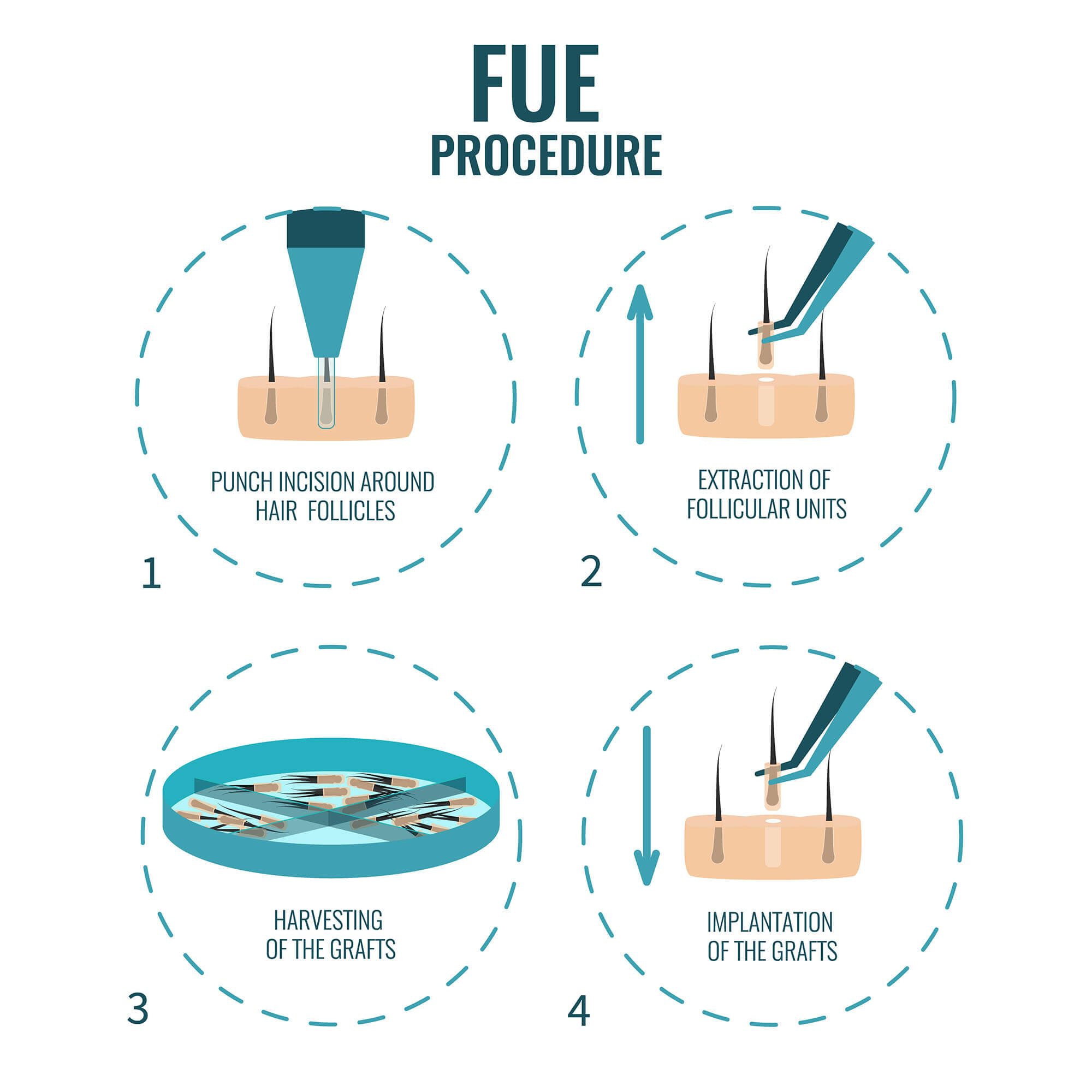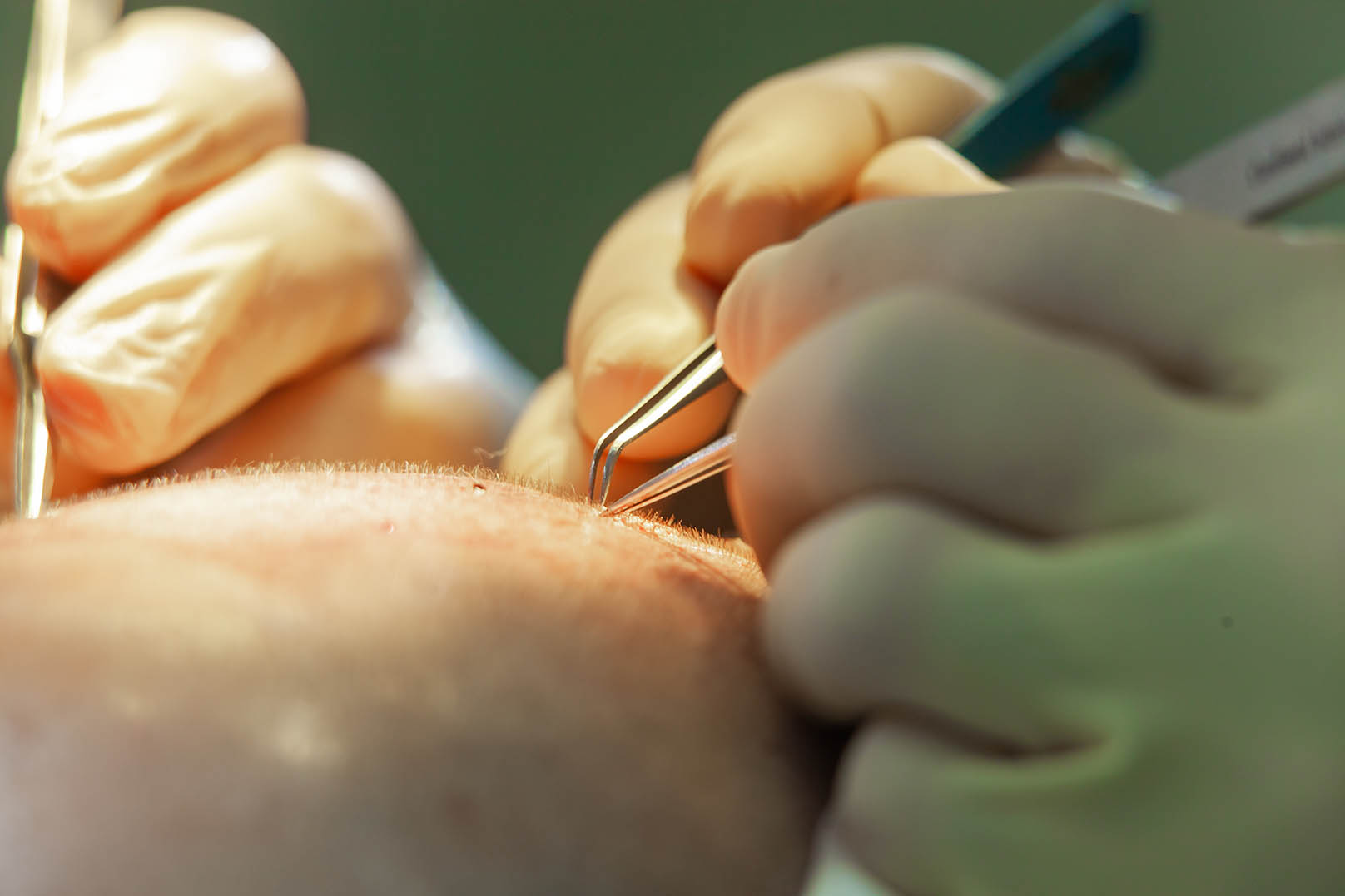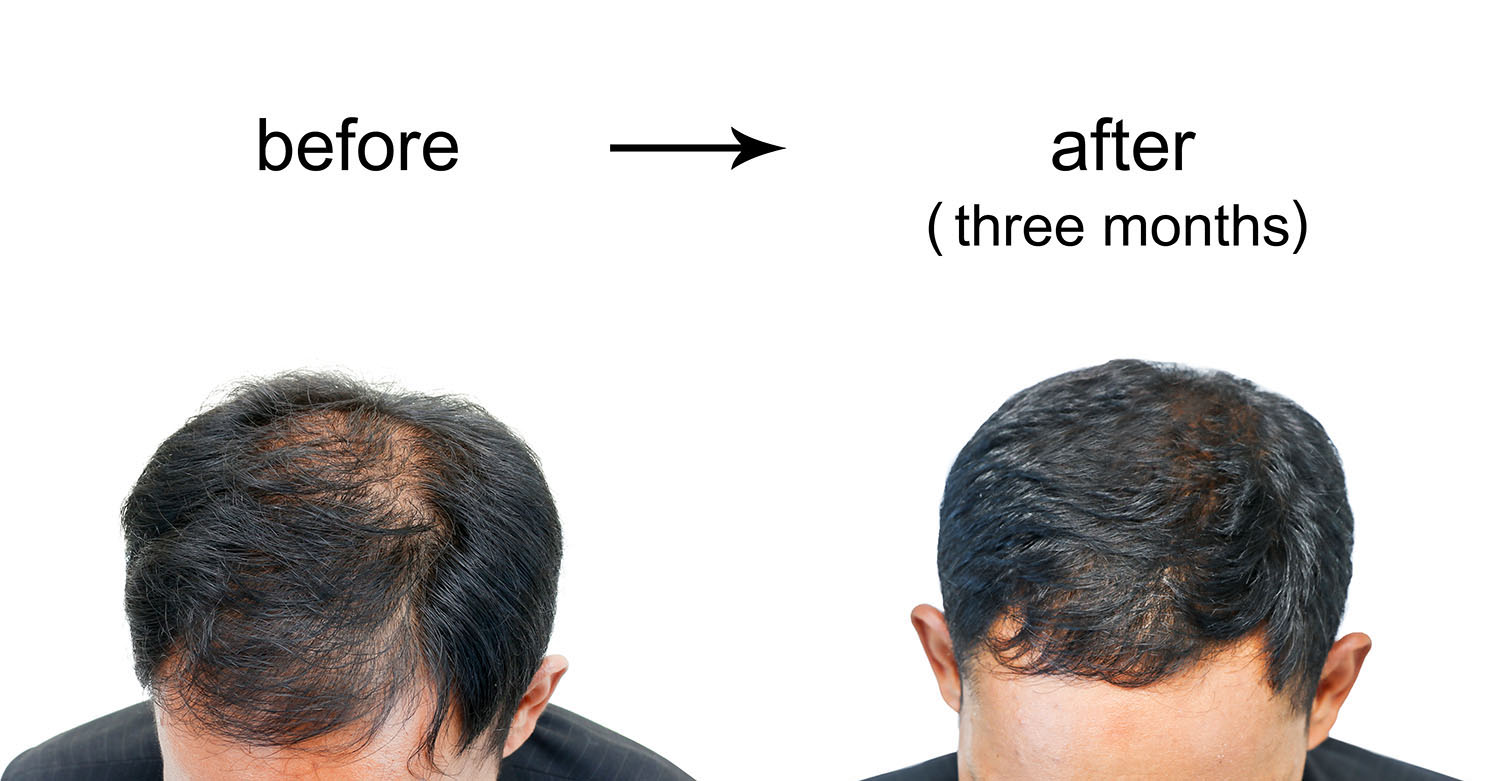What is FUE
It took decades of research and progress for hair transplantation to become as safe and effective as it is today. Nowadays, all around the globe the most widely used method came to be the Follicular Unit Extraction (FUE), thanks to the exceptional success rates and aesthetically pleasing permanent results achieved with this technique. During the FUE operation, hair from the donor area which is the back of the patients head, is collected and prepared to be transplanted unto bald spots on the head, and to the frontal area where the original hairline had been before receding. The fact that it is the patients own natural hair that is being transplanted is the key to FUE’s success.

Why am I losing hair and how can hair transplantation help
There are many different reasons why men and women of all ages lose hair. Although the causes of hair loss vary, there are two common factors that are prevalent in every case. These factors are the health of the hair follicles and the sufficiency of the blood supply that sustains the hair and scalp skin. Smoking, old age, poor nutrition, genetic susceptibility, hormonal changes, excessive skin inflammations, fungal infections and certain other diseases are among the many culprits when it comes to hair loss, but they all work through similar mechanisms. This understanding led doctors to consider a treatment that can address both factors at the same time. Research showed that not all hair follicles are the same, and there are some follicles that are much less susceptible to falling off than others, even at very advanced ages. These are the follicles that grow on the sides and the back of the scalp, which is used as the donor area in transplantation surgeries. By using these follicles, we ensure that your hair is growing out of the absolute strongest roots your body can offer. The result is permanent restoration of hair on your scalp and the rejuvenation of your original hairline with an aesthetically pleasing natural look.
Will the donor area recover
The hair follicles taken from the donor area recover much quicker relative to anywhere else on your scalp. Typically the donor area will be fully covered with hair within the first 3 months after the operation. The original density of the donor area and the proper care for the area are the two most important factors for a swift recovery. After the full result of the operation is achieved, there won’t be any visible marks or signs left on the donor area.
During the recovery of the donor area, it’s perfectly normal to experience itchiness, slight swelling and sensitivity to touch. These are all side effects of the natural healing process. Any over-the-counter anti-inflammatory will help with managing these discomforts. The best treatment however, is prevention by taking very good care of the donor area after the operation. Please feel free to consult our doctors any time if you have any complaints.
Why does it work better than medications
There are two popular medications commonly available on the market against hair loss: minoxidil and finasteride. Minoxidil is a vasodilator that has to be taken for 3-6 months before it shows effects and afterwards continuously to sustain the hair, and it has quite a few side effects that usually puts people off of the drug before its effects can be visible. Finasteride on the other hand is a medication that is used to decrease the levels of testosterone (DHT) in the blood, and it too, is effective only after 6 months of use, although side effects are rarer compared to minoxidil. Together, they work against the two common factors in hair loss: follicle degradation and blood supply insufficiency. But compared to hair transplantation, this is inefficient and synthetic. There already exist hair follicles that are durable, easily sustainable and produce strong hair strands. Using these natural hair follicles to repopulate bald areas produces permanent results without the need for long term daily supplementation.
Our doctors do not suggest taking any hair growth medication or any supplements marketed as anti-hair loss along with hair transplantation. Please consult your doctors any time if you have any questions.
How long does it take
The duration of the hair transplantation operation depends on several factors, but usually it takes from 6 to 8 hours in total. The number of grafts is the most important determinant for the duration. In addition to the lunch break, you are free to take as many breaks as necessary during the entire operation.
Am I going to be sleeping through it
Hair transplantation is done under local anesthesia applied under the supervision of an anesthesiologist, using the most commonly used combinations. You will be awake and conscious during the procedure unless you prefer to take a nap.

How long until I can see results
Each individual case of hair transplantation with FUE or DHI can take different amounts of time until what can be considered the final permanent results. Under normal circumstances, the result will take between 8 to 12 months of development to reach a perfect and permanent stage. Along the way to the final results, there are several significant stages of development. In the first 2 months after the operation, both the transplanted area and the donor area may look slightly inflamed, with small patches of falling hair. The hair thickness is also lower at this point. However, by the third month, you will have undergone a shedding stage where these thinner, less dense temporary hair strands will fall off and start being replaced by thicker, denser, more vibrant and healthy hair strands. By the end of the third month, the donor area will be almost entirely recovered and the transplanted areas will be covered by hair. From the third until the sixth month, sporadic hair falling is expected. All of the hair that fell off will be replaced shortly, because the roots of the hair are already embedded under the scalp skin.

There are certain factors that influence both success and the duration it takes to reach the final result of the operation. First and foremost, proper care for the hair must be maintained throughout all stages of development. Using the correct products as demonstrated by the experts is important, as well as avoiding some of the risks especially in the first month. Physical damage to the newly transplanted hair, poor hygiene, smoking and not using the proper medications and products are among the most prevalent risks.
How long do the results last?
The results of hair transplantation with FUE and DHI techniques are permanent. Even at old age, the transplanted hair remains.
What happens if the hair on the rest of my head starts falling off?
The hair transplantation operation when combined with the proper products will significantly delay the loss of non-transplanted hair adjacent to the transplantation area by creating new blood vessel networks and the proliferation and spread of the strong transplanted follicles. This way, the operation provides a general improvement of hair profile all over the scalp.
What do people who have had it done say about it ?When performed by experts under proper conditions, hair transplantation has famously high satisfaction rates. Compared to other cosmetic surgeries with more risks and side effects, both FUE and DHI offer affordable and safe ways to improve confidence and regain youth with a natural look.
Many of our patients are willing to share their experience with you. If you would like to connect with one of our previous patients, please book a free consultation now.
My hair has always been thin, can I still get transplantation
Everyone has an individual hair character and profile, just like how we all have individual fingerprints. The variables of hair profile are the color (pigmentation), area density, the microscopic texture of the hair strands and the thickness of each individual hair strand. These characteristics are unique to you. The advantage of hair transplantation is that the transplanted hair retains all of these characteristics and the hair profile remains natural. Combined with other advantages and benefits to the hair character offered by the methods used in hair transplantation, the results are as close to your natural hair in your youth.
While different hair profiles provide unique challenges to our doctors, we take great care in evaluating each case individually and plan the operation according to the principle of rejuvenating your hair to match your hair profile. This way, our patients can expect to look 10 years younger after the operation.
Is it dangerous
Hair transplantation is one of the safest cosmetic surgeries currently available for our patients. There are no long term side effects of this operation, and the short term side effects are all temporary and easily manageable by proper care and hygiene. Side effects may include irritation, itchiness, sensitivity to touch and slight swelling. All of the side effects are managed with over-the-counter medications like basic anti-inflammatory pills (ibuprofen). Every step of the hair transplantation operation is supervised by specialist doctors in our state-of-the-art clinic equipped with all the necessary equipment. Our hospital follows international hygiene standards and the quality is assured with European standards of management.
Is it painful
Hair transplantation is performed with local anesthesia performed under the supervision of an anesthesiologist. We use the pain-free technique which involves contact-free anesthesia applicators and non-reusable equipment. Thanks to this method, the entire operation is painless, safe and absolutely hygienic.
Graft numbers
The number of grafts used in the operation depend on two main factors: the extent of the bald area to be covered and the donor area availability. We always collect the number of grafts necessary to create perfect results, but at the same time, great care is taken to preserve the natural form of the donor area. Extracting excessive number of grafts can hurt the donor area and create suboptimal results after the surgery, and transplanting too few grafts can decrease the quality of the operation. This is why, we never change our prices based on the number of grafts as this can create a situation where we would have to settle for less than perfect results. We think this is unacceptable as we always aim to create a perfect and natural hair profile for our patients.
If you would like to find out how many grafts will be needed for your operation, book your free consultation with our doctors for an evaluation now.